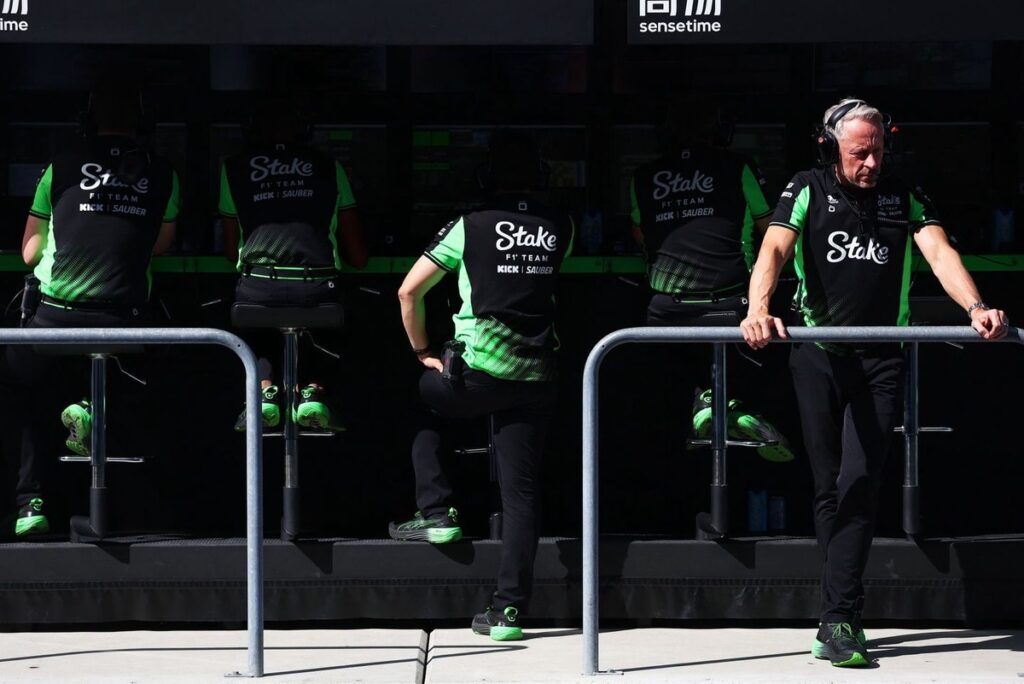“Life in Switzerland was one of the biggest surprises of the job,” Sauber team principal Jonathan Wheatley tells Autosport.
“I’m absolutely loving it. We live in Zug [a lakeside town in the foothills of the Alps], which is not far from Zurich, we’ve got this amazing city just down the road, and my wife and I often sit there in the evenings, going: ‘My God, this isn’t a holiday. This is where we live’.”
Wheatley’s evangelism for the Swiss lifestyle is common among those who move there. Not that this computes with F1’s opinionati.
For years now the commonly accepted narrative has followed the line that Sauber will never succeed because it’s too remote. Alongside Ferrari and Racing Bulls, it is one of just three teams headquartered outside the UK, operationally speaking.
It would be easy to deride this as a smug and jingoistically blinkered point of view, but it has a certain compelling logic. If you live on the Oxfordshire-Buckinghamshire-Northamptonshire axis, you can migrate between teams – even racing categories – without moving house. Hinwil, Maranello and Faenza, on the other hand, require more long-term commitment.
It’s not for everyone, as evinced by Racing Bulls setting up a satellite technical office within its Red Bull parent team’s Milton Keynes campus, and Sauber recently opening a similar facility at Bicester Motion. But while this enables the two teams to fish in the ‘Motorsport Valley’ talent pool, it is slightly sub-optimal in terms of esprit de corps.
Sauber Motorsport Technology Centre at Bicester Motion
Photo by: Sauber
“I guess when I was given the opportunity to join the Audi F1 project,” says Wheatley, “I was so focused on the racing, so focused on the team and what that was going to look like.
“I hadn’t really thought about what life in Switzerland was like. I’d say it’s more than a pleasant surprise.”
Learning from Toyota
Still, for some potential recruits, swapping countries is a potential obstacle. So too is the spectre of history: large car companies tend to blow it when they try to run an F1 team along inertia-laden corporate lines. There’s even an example that lies neatly in the intersection of a Venn diagram describing these two key problems of geography and management: Toyota.
The Japanese-owned team retains the unwelcome record for having spent the most in F1 without recording a single victory in its eight seasons in the category. Many of those who worked in its Cologne HQ reported that senior management expended more time and energy managing the expectations of the ‘mothership’, and making spurious presentations explaining away underperformance, than they did on finding ways to make the cars go faster.
Anyone who has worked in a corporate environment will be familiar with the bloating process of management breeding more management, and so-called leaders who blather incontinently about ‘agile structures’ while mentally composing a job ad for a senior vice-president of paperclip audit.
Another fact of life in the corporate world: the further removed an outpost is from the HQ, the more it tends to fold in on itself with personal fiefdoms and infighting. That’s what appeared to be developing at Sauber under the previous regime when Audi appointed Andreas Seidl CEO at the beginning of 2023, then moved Oliver Hoffmann from his role as chief technical officer at the car company to a rather less defined position in the F1 team just over a year later.
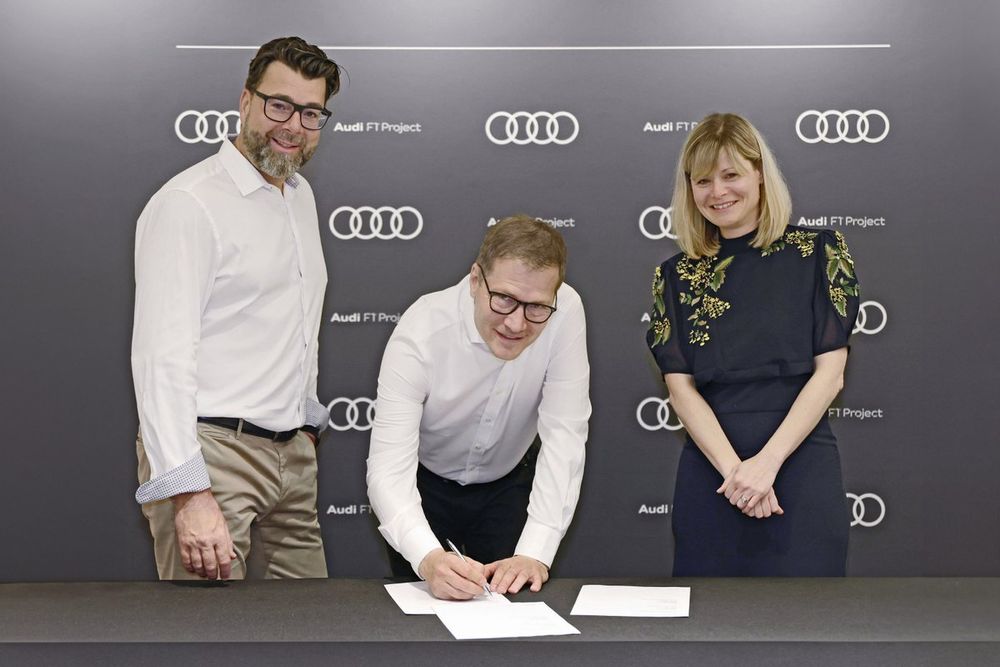
Oliver Hoffmann, Audi AG Formula 1 General Representative, Andreas Seidl, CEO Audi F1 team, and Nicola Buck, BP SVP marketing
Photo by: Audi
Against a background of underperformance on track, reports emerged of tension behind the scenes. By July 2024, both Seidl and Hoffmann had been ousted, replaced by former Ferrari team principal Mattia Binotto in the dual role of chief operating officer and chief technical officer, with Wheatley coming in as team principal – though gardening leave dictated he didn’t start until the third round of this season.
The mover of the pieces here was Audi chief executive Gernot Doellner. It had been reported as early as January 2024 that Doellner was dissatisfied with the speed of technical advances in the road car division and was on the verge of removing Hoffmann. So when Hoffmann transferred to Sauber in March, at the same time as Audi committed to a full takeover of the team rather than just a 75% shareholding, it seemed a curious manoeuvre.
This little tableau appeared to demonstrate everything that can go south when a car company buys into F1: senior man is ousted from the main board, given a non-job in the F1 operation in the hope that he will leave organically, but instead he gets his elbows out and tries to turn the non-job into a functioning sphere of influence. Firing ensues, followed by new management. Rinse and repeat.
So when Doellner appeared alongside Binotto in a press conference at the Italian Grand Prix and said, without a trace of irony, “we are totally aware that it’s necessary to keep this project away from corporate processes”, many in the audience simply rolled their eyes.
The big test would be whether Binotto and Wheatley would be allowed to get on with their jobs or, if the team continued to under-perform, the axe would shortly swing again. It was noticeable that despite Sauber’s weak start to the season, no such bloodletting came to pass – and the results have tracked upwards.
Wheatley came up through the ranks at Benetton/Renault and Red Bull, both organisations that successfully combined buccaneering independence with servicing a corporate overlord. Unsurprisingly, he knows how to navigate this world.
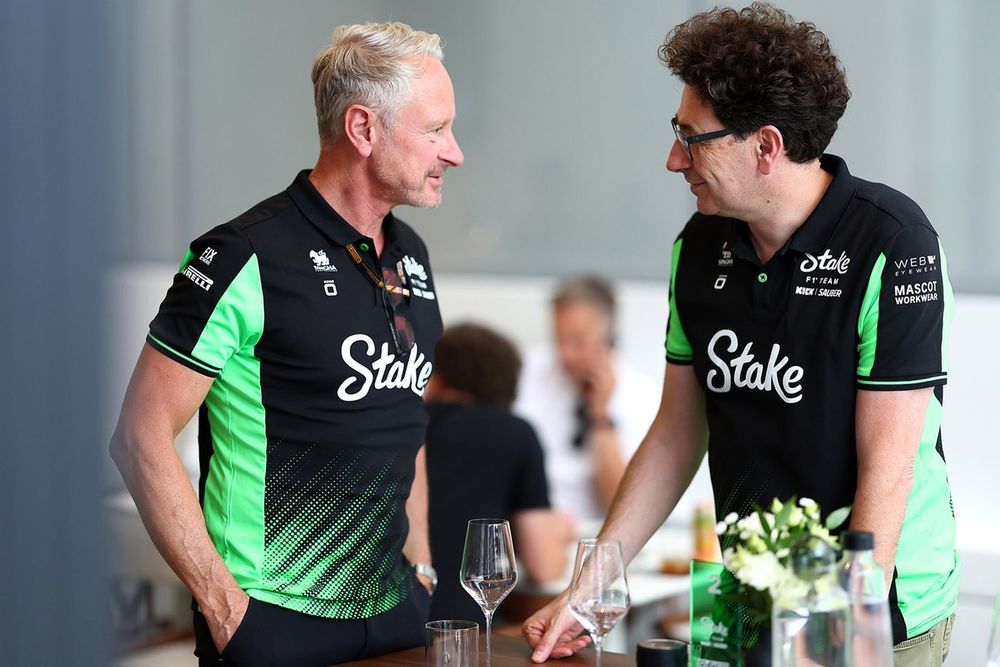
Mattia Binotto, Sauber
Photo by: Andy Hone/ LAT Images via Getty Images
“Yes, of course, there are methodologies that you have to take on board,” he says. “They [Audi] are getting to know us. We’re getting to understand them.
“But the bottom line is, Gernot Doellner has described us as a speed boat, and we’re off doing Formula 1, and it’s our area of expertise. We have the full support of the board. It’s fantastic, I have to say. And I’m really enjoying the way we’re going about our working at the moment.
“If you look at why Mattia and I are sitting here now, you can imagine we had all of these conversations along the way, but it was really this inspirational approach that Gernot laid out to me 12 months ago, which is why I’m here now.
“These are very, very clever people. They know exactly that this is an area which you can’t apply all of the same philosophies that you do in the group.
“But we still represent the brand. And the most important thing, and where the biggest collaboration is, is making sure that we communicate and we represent the brand in the right way.”
Over in Woking, Andrea Stella has demonstrated that it’s possible to re-engineer an existing team into a much more competitive proposition by using the existing staff more effectively rather than recruiting high-profile ‘superstars’. McLaren has poached staff from elsewhere, notably Red Bull chief engineering officer Rob Marshall – who came in as chief designer. In terms of job title, this might not seem like a promotion, but one of his acknowledged strengths is to act as a facilitator between departments, rather than placing an authorial stamp on any particular item of the car.
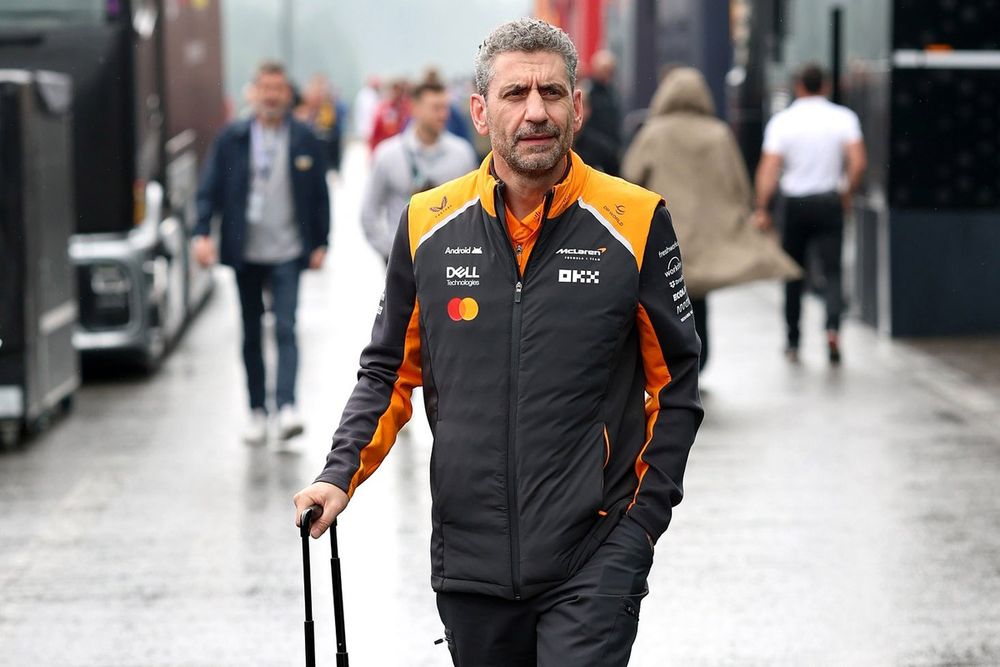
Andrea Stella, McLaren
Photo by: Steven Tee / LAT Images via Getty Images
David Sanchez joined from Ferrari but was then allowed to move on when Stella’s finalised engineering setup didn’t offer the kind of senior role he expected. F1 is an innovation business so in terms of structure, what matters is what works.
Elsewhere on the grid, Aston Martin has already hired and fired one senior technical figure, Dan Fallows, to no great avail in terms of results. Perhaps on account of having an impatient billionaire holding the reins, it seems locked in what the book of senior management excuses terms “a transitional phase”.
Wheatley has said he needs to learn more about Sauber’s operations before he gets his elbows out, but he knows what a winning organisation looks like. Importing big names sends a different message to the staff than it does to the shareholders. To those on the factory floor, it implies dissatisfaction and the feeling that they are insufficiently valued.
“It has to be a balance,” says Wheatley. “There are some areas where you need to make some really quick steps, and maybe they need some new leadership. There’s not been so many of those so far that I’ve been here.
“And you have to identify the future stars in the organisation and bring them on. Because I’m not really sure what culture you’re creating if you just go outside all the time.
“If we’re to be a proper works Formula 1 team with strength and depth in every area, we need to recruit at a young age. We need to train people, and we need to teach them what the ethos is of the Audi F1 team.
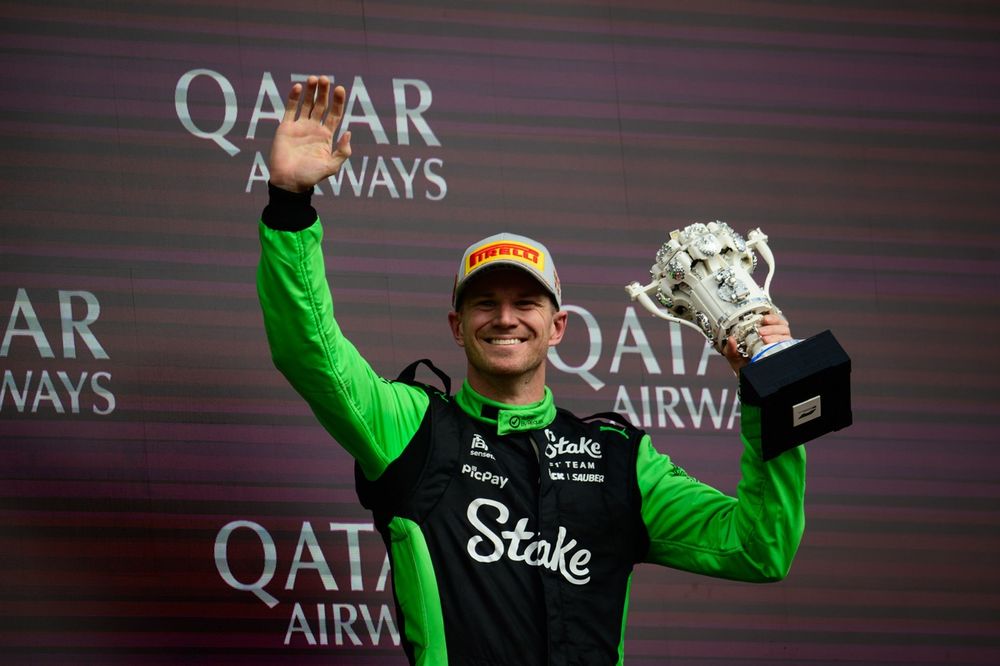
Podium: third place Nico Hulkenberg, Kick Sauber
Photo by: Erik Junius
“We need to create our own talent, and we’re well on the way with that. Mattia has got some very interesting young engineering programmes underway, and I can really feel in the business that it’s turning a corner.”
Given Sauber has outscored almost half the grid in the past six grand prix weekends, that’s a difficult point to argue against.
In this article
Be the first to know and subscribe for real-time news email updates on these topics
Read the full article here

